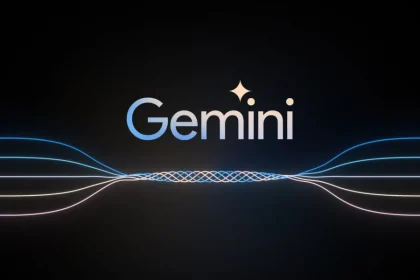In my post about illegal immigration, a commenter pointed out that I was lucky to avoid greater financial consequences from my car accident. It turns out that the maneuver where a car accelerates from a stop and then suddenly slams on the brakes is a common insurance scam. This tactic is known as the “sudden stop” or “brake check” scheme.
I started researching more about this type of fraud because it had crossed my mind during the accident. Out of nowhere, after accelerating hard, the car in front of me slammed on the brakes for no apparent reason—she had the right of way at the intersection. Thankfully, I was stationary at a stop sign, barely reaching 3 mph toward the front, before slamming on my brakes and bumping into her car.
Could Have Been A Setup
Later that evening, a reader from San Francisco reached out, sharing a similar experience from just the other month. What was remarkable was that it happened at the same intersection: the three-way junction of Sloat Blvd, Skyline Blvd, and Lake Merced Blvd.

And when they pulled over at the same spot on Skyline Blvd, just before Zoo Road, the other driver was also a woman who didn’t speak English and could not produce car insurance or an ID. Conveniently, there just so happened to be a man on the side of the barren road who could translate for her. What are the chances?
That made me replay the details of my own encounter. It happened at 2:57 pm on a Thursday, and the only other thing I remembered was seeing people in a car coming the other way from Lake Merced Blvd who were watching and laughing, as if they knew it was a setup. How strange, I remember thinking, for an accident so out of the blue and minor.
Were my daughter and I the victims of a staged vehicle collision? I’m not sure since no money was extracted from me or my insurance company. Maybe when they pulled over, they expected to see damage to her old car. But due to my reflexes, there wasn’t any, so they just decided to let things go.
Unfortunately for the reader, there was damage to the front person’s beater car. So she is in the process of dealing with her insurance company now.
If you are a frequent driver, beware that you could be getting set up for car insurance fraud. If you don’t think car insurance fraud affects you, think again. Billions of dollars are lost to fraud each year, driving up premiums for everyone.
I had to do more research!
Case Study on Car Insurance Fraud
Below is the first thing I found about car insurance fraud from California’s Department of Insurance. Los Angeles accounts for nearly 43 percent of all auto-related insurance fraud in California.
On February 24, 2021, Zandra Monterrozo, 44, of Corona, pleaded guilty and was sentenced for her involvement in an organized ring that staged vehicle collisions to collect over $135,000 in fraudulent insurance payouts. Eleven other suspects, which included body shop owners, were also charged or prosecuted.
List of 11 additional suspects:
- Bethuel Guevara Aguirre, 39
- Monica Elizabeth Sosa Alonzo, 39
- Baudilio Enrique Noguera, 49
- Juan Venancio Juarez Miranda, 49
- Carlos Enrique Lopez, 56
- Emma Amparo Lemus Martinez, 59
- Osmar Fernando Lopez, 40
- Alfonso Leon Baltazar, 51
- Mario Renee Alonzo, 67
- Marcos Farias, 70
- Walter Chacon, 31
Monterrozo was sentenced to one felony count of insurance fraud, ordered to pay $6,000 in restitution, and served one year of probation. I’m not sure what happened to her other potential accomplices.
The scam involves one car intentionally braking quickly without reason, giving the driver behind little time to react, causing a rear-end collision. The investigation revealed the ring was responsible for eight staged collisions involving innocent victims, and two collusive ones, resulting in $137,832 in losses for victims and various insurers.
How the Brake Check Scam Works
More specifically, here’s how scammers profit from the brake check scheme, often with the help of a mechanic or clinic.
After forcing a collision, the scammer claims minor damage, like $1,000. They then enlist a shady mechanic who “finds” an additional $8,000 worth of damage. The mechanic bills the insurance company $9,000, and they split the extra $8,000 that was never spent on repairs.
In addition to damages, scammers may claim medical issues like whiplash or back pain to inflate their payout. With multiple passengers, each person can file separate claims for “injuries,” potentially earning even more. Ideally, a fraudulent clinic is involved, so the scammers can split the insurance payments from fake medical treatments as well.
Another way to extract money from the victim is through intimidation. After the accident, the scammers may demand cash or valuables, with the translator or witness suddenly becoming a threatening figure. If there’s little damage to the scammer’s car and they believe the insurance company won’t pay out, the brake check incident can escalate into a mugging or the perpetrators might just drop the situation.
Scammers may also recruit newly arrived undocumented immigrants who are more desperate for cash. They might serve as passengers, witnesses, or even drivers with fake IDs. After the collision, the experienced scammers step in to handle the claim. However, relying on inexperienced individuals can backfire, as poor maneuvering or fear of confrontation could cause the setup to fail.
Red Flags of a Staged Collision
If you suspect you’re a victim of a staged collision, look out for these signs:
- The other car is full of passengers to increase the potential amount for financial payout.
- The driver has a new insurance policy or no insurance policy.
- Their vehicle is in poor condition or has a salvage title.
- Traffic was flowing smoothly, but they stopped suddenly.
- The driver and passengers all claim injury despite minimal damage.
- There are random witnesses who all happen to be of the same background of the other driver.
Pre-mortem planning is crucial for staying calm and focused during a shocking event. If you haven’t already, create a checklist of steps to follow in case of a car accident, e.g. call 911, call/text love one, find tourniquet, find license, insurance, and registration, etc. Since accidents are rare, your mind might freeze in the moment, unsure of how to proceed. But in a serious accident, every second counts.

Video of Brake Checking and Other Reckless Driving Behavior in Action
One common criticism I received from readers is that the accident was entirely my fault since I rear-ended the car. I acknowledged that it could have been, even with the sudden braking, and had no problem exchanging ID and insurance information. Accidents happen and that’s what insurance is for.
Some readers said I was out of line for asking for the other driver’s ID and insurance. I thought it was standard protocol, since that’s what you do when dealing with the police during any traffic incident. I prefer knowing who I’m dealing with after an accident. By corroborating the name on the insurance card and ID, I reduce my chances of being scammed. But in this case, the driver was unable to show either.
Others blamed me for tailgating. When I’m at a stop sign or red light, I typically leave about three or four feet of space—enough for someone to comfortably walk between the cars. If a car suddenly accelerates and slams on the brakes, even from a standstill, it’s hard to react quickly enough. I’ve learned my lesson. Now I will leave more space just in case, regardless if drivers behind me think I’m being unreasonable.
This type of guilty-until-proven-innocent reaction is one of the reasons car insurance fraud through brake checking is such an effective scam. If the driver in the rear is always blamed, no matter the circumstances, scammers are incentivized to use the brake check scheme to cash in.
For those who insist the front driver is never at fault, check out this video that shows numerous examples proving otherwise. Before jumping to conclusions, remember there are always two sides to every situation.
Defrauding Auto Insurance Companies Is Not Worth It
I’m all for side hustles to make extra money, but auto insurance fraud doesn’t seem like a good return on effort. Take the case of Zandra Monterrozo. She collected $137,832 in fraudulent claims, but it took eight staged collisions with innocent victims and two collusive crashes to get there. Staging 10 collisions is a lot of work!
Not only is it time-consuming, but there’s also the risk that the insurance company might not pay out. If they don’t cover at least the vehicle’s damage, you could end up losing money. And it’s unlikely that fraudulent claims have a 100% success rate, especially when insurance companies are experienced at spotting these scams.
Another downside of insurance fraud is having to share the profits. Monterrozo had to split the $137,832 with 11 other people. That brings the average payout per person to just $11,488. Even if some took more and others less, it’s hard to imagine the ring leader walking away with more than a third of the total amount.
Another downside is getting into an accident with the wrong victim. What if the person doesn’t stay calm like I did and instead pulls out a knife or gun to retaliate? The victim could easily get pissed off because they will think the accident was your fault. That’s a risk that doesn’t seem worth taking.
Lastly, there’s the risk of getting caught. Monterrozo received a relatively light sentence—$6,000 in restitution and one year of probation. With such lenient consequences, it’s easy to see why some scammers might be tempted to try again.
Let’s Have Compassion For Both Parties In An Accident
While it’s tempting for fraudsters to exploit the system, it’s not a sustainable or risk-free way to make money. For the average person, taking part in an organized scheme like this isn’t worth the legal and financial consequences.
I understand that desperate times can lead to desperate measures. Empathy for perpetrators is a key principle for restorative justice advocates. If you are poor without many financial options, the temptation to partake in a car insurance scam for a quick $500 is understandable. I get it. Everybody deserves to pursue a better life for their family.
However, if we’re going to take a softer approach to crime, we must also ensure victims are compensated for the damage and suffering they endure too. Let’s not treat criminals better than law-abiding citizens.
Nobody wants to get into an accident, yet more than 6 million occur every year in the U.S. If you’re unlucky enough to be involved in one, hopefully, you’ll have friends and loved ones who support you rather than vilify you.
![]() Loading …
Loading …
Recommendation For Drivers To Protect Themselves Against Car Insurance Fraud
Now that you’re aware of the brake check scheme and other staged collisions used to scam insurance companies, here are some steps to protect yourself:
- Install a front and rear-facing camera that continuously records while you drive. This provides crucial video evidence in case you’re involved in a staged collision. One recommendation my close friend uses is the Pulse P12 Pro 4K Mirror Dash Cam. It costs about $200-$300 to install and I’m getting one ASAP.
- Drive a modest but safe car. Stagers often target high-value vehicles like commercial trucks, luxury cars, or government-owned vehicles, as these are almost guaranteed to have insurance coverage. Car insurance fraud is another reason why practicing Stealth Wealth is important.
- Always insist on a police report at the scene of the accident, and ask the officer to positively identify all parties involved.
- Thoroughly document the accident. Use your cell phone to take photos or videos of the collision, including any damage to the vehicles. Check for ID and insurance.
- Report the suspicious collision to your state’s Department of Insurance. They may have valuable information and resources to assist you.
- Consider getting tinted windows. Depending on where you live, you are legally allowed to tint your windows up to a certain limit. Consider going to that limit. The darker your tint, the harder it is for others to see. This creates more risk for fraudsters to pick on you.
- Get the right insurance policies. In addition to reviewing your auto insurance policy, it’s worth considering an umbrella policy for added liability protection. Ask for your insurance company’s recommendations on the appropriate coverage amounts for each type of insurance.
Nobody Really Cares, So You Must Stay Vigilant
Whether my accident was truly an accident or a setup, I will probably never know. What I do know is that it’s on me to pay $3,500 to replace my bumper if I choose to. I bumped into the car ahead, and the responsibility is mine, no one else’s. I’ve learned to leave a larger gap between myself and the car in front when stationary, and I’ll be driving more cautiously moving forward.
Even if you’re the victim of fraud, people will still find a way to blame you, often showing little sympathy for your situation. And if you admit the accident was entirely your fault, people will jump at the chance to tear you apart and exploit the situation financially. This became clear to me after reading comments on my previous post and talking to friends.
It’s a tough world out there, folks. Nobody really cares about your problems—maybe your parents do, but even then, some people don’t have that fundamental love. How sad. Protect yourself and stay safe!
Reader Questions
Have you ever been a victim of car insurance fraud or any other type of insurance fraud? If so, how did it happen, and how much did the perpetrators get away with? If you work in the auto insurance industry, I’d love to hear your insights on car insurance fraud. What’s the denial rate, and how often do insurance companies detect fraudulent claims?
The world is full of uncertainties. Protect yourself. If you have debit and kids, lock down an affordable term life insurance policy Policygenius. My wife and I both secured matching 20-year term life insurance policies during the pandemic. After getting the policies, we felt a huge sense of relief since we have two children. Do the responsible and loving thing.
To fast-track your journey to financial freedom, join over 60,000 others and subscribe to the free Financial Samurai newsletter. Financial Samurai began in 2009 and is one of the top personal finance sites today.







